Jack Kerouac
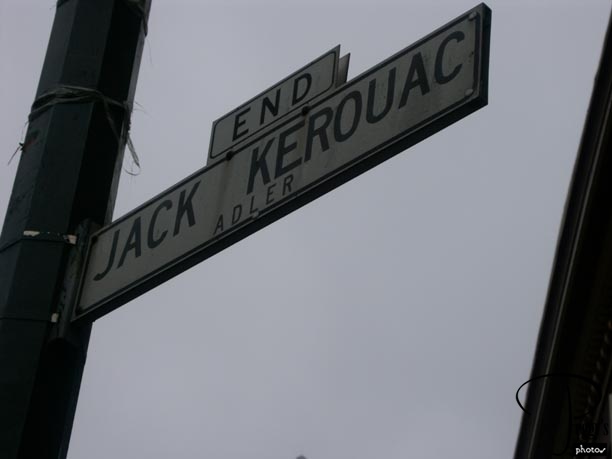
My Eyewitness Travel Guide to San Francisco outlined what I thought would be an interesting walk to take in the North Beach section of San Francisco. To get to North Beach from the hotel, I caught the Powell/Mason cable car just a block away and got off a couple of blocks away from Broadway. The reason that I wanted to take this walk is that Jack Kerouac had a connection to my home town of Northport, Long Island, New York, and he had a strong connection as well to North Beach. After his famous book “On the Road” was published in 1957, it seems that he wasn’t ready for the fame that it brought him. His mother was living in Northport about that time and Jack came to Northport to be near her. One article about him reported that he lived with his mother in Northport, but another article reported that he lived for several years in an apartment over the Sweet Shoppe on Main Street. I don’t think many of us knew that he had become a local resident (I didn’t), but several of the boys in my graduating class did meet him (perhaps at Jack’s watering hole across the street from his apartment––Gunthers). But these boys did present our high school graduating class of 1960 with a dedication written by Jack Kerouac, one that no one seems to be able to locate. Now, I would be interested in knowing what words of wisdom he had given to our graduating class. Photo: An alley was named after him here in San Francisco. I cannot find out why the word Adler has been used.

Jack Kerouac
City Lights Bookstore

The walking tour started at the City Lights Bookstore (Jack Kerouac Adler is to the left of the bookstore). This bookstore was owned by the Beat poet Lawrence Ferlinghetti and was the first bookstore in the United States to sell only paperbacks. Kerouac was a friend of Ferlinghetti. The word “Beat” was coined by Kerouac and indicated a feeling of weariness (being beat) felt by some artists and writers during the 1950s. These artists and writers became known as the Beat Generation and included Kerouac, Neal Cassady, Allen Ginsberg, etc. The Beat Movement also had to do with the politics of dissent and free love––I guess this is why our high school never invited Kerouac to speak to us! Our parents were having enough trouble at this time dealing with the popularity of Elvis Presley (today, of course, Jack Kerouac is almost a Northport favorite son with exhibitions given there dealing with his life and work). Anyway, this disaffected group of artists and wrtiers gathered in this area of North Beach in the 1950s.

City Lights Bookstore
City Lights Bookstore
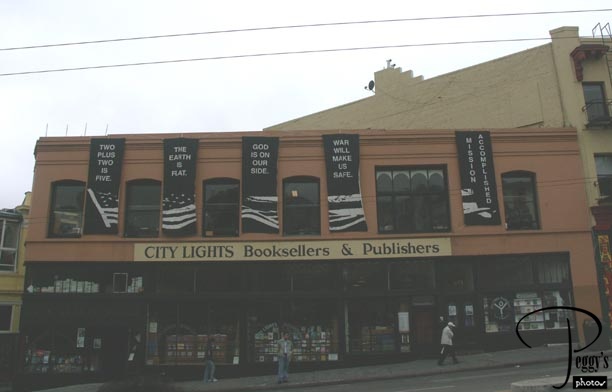
Closer–up of the bookstore. The signs on top of the bookstore read: Two Plus Two Is Five; The Earth Is Flat; God Is On Our Side; War Will Make Us Safe; and Mission Accomplished.

City Lights Bookstore
City Lights Bookstore
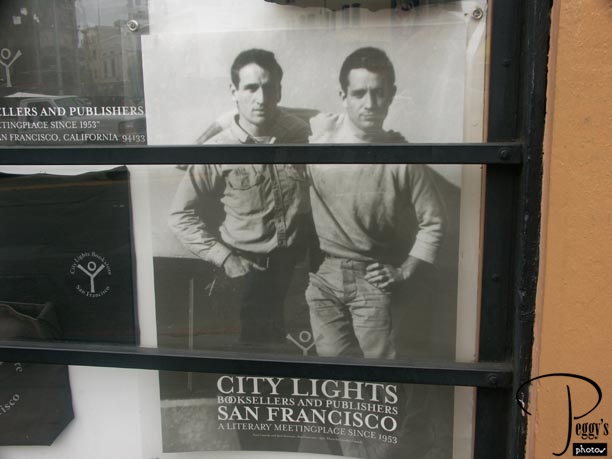
Photo of Neal Cassady and Jack Kerouac in the window of the bookstore (Neal Cassady went along with Kerouac on the On the Road trip across the country). Kerouac is on the right of the photo.

City Lights Bookstore
City Lights Bookstore
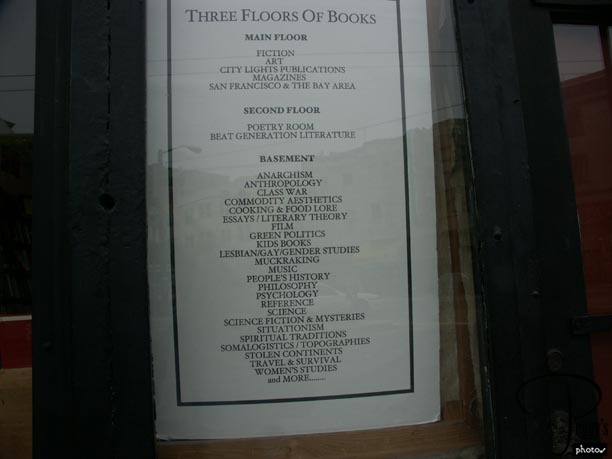
If you can’t make out some of the bookstore’s sections, here are some: Beat Generation Literature; Anarchism; Class War; Green Politics; Muckraking; Situationism; and Stolen Continents.

City Lights Bookstore
City Lights Bookstore

Books in the bookstore window. These are hardbacks so it seems that it no longer carries only paperbacks.

City Lights Bookstore
Jack Kerouac Adler
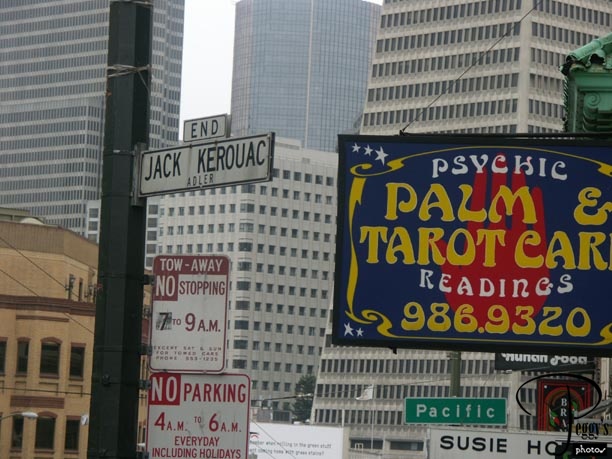
A view of the city sights around Jack Kerouac Adler.

Jack Kerouac Adler
Jack Kerouac Adler
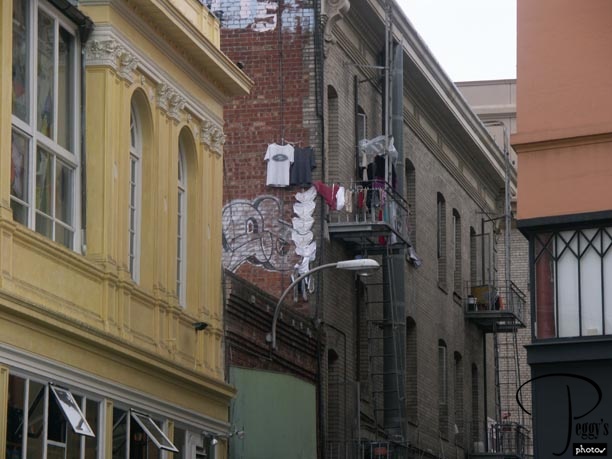
View of the alley. I guess it is not only in Italy that you see clothes drying on balconies.

Jack Kerouac Adler
Vesuvio
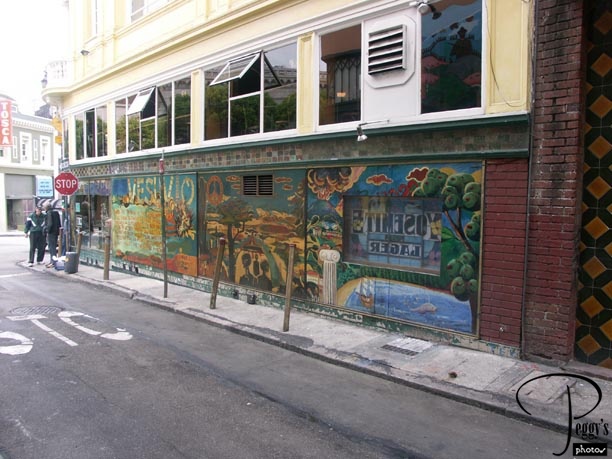
On one side of Jack Kerouac Adler is the City Lights Bookstore. On the opposite side is the Vesuvio––a bar frequented by the Beats and still in operation.

Vesuvio
Vesuvio
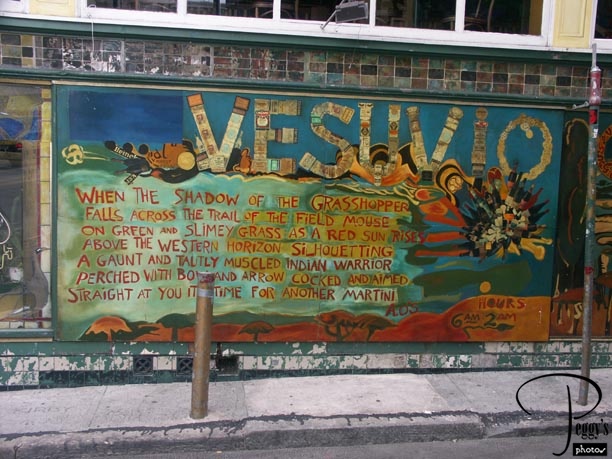
Close–up of part of the mural on the side of the Vesuvio. If you can’t read the words in the photo, here they are: “When the shadow of the grasshopper falls across the trail of the field mouse on green and slimey grass as a red sun rises above the Western horizon silhouetting a gaunt and tautly muscled Indian warrior perched with bow and arrow cocked and armed straight at you it is time for another martini.” Signed: A.O’S

Vesuvio
Vesuvio
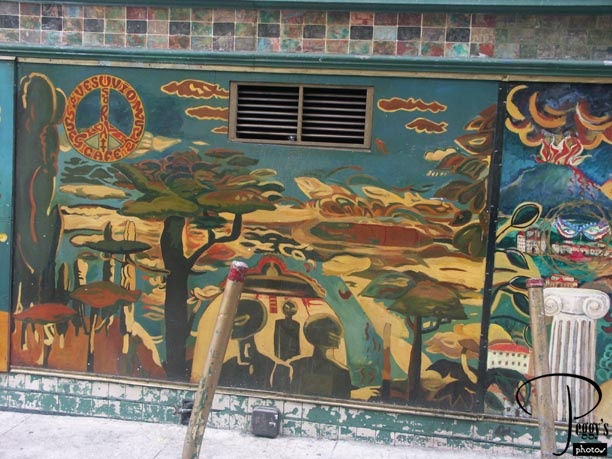
Close–up of another of the murals.

Vesuvio
Vesuvio
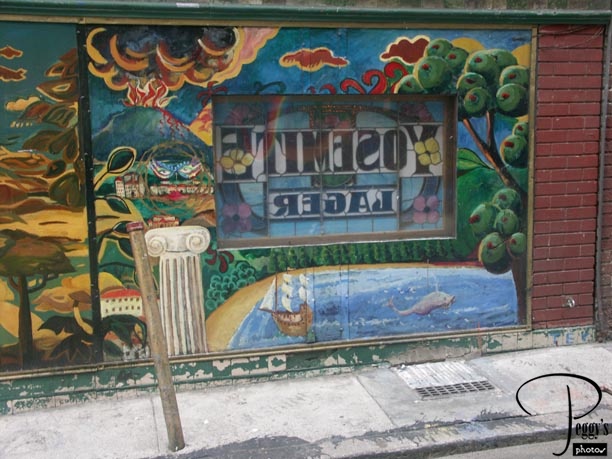
Close–up othe rest of the mural.

Vesuvio
City of Lights Bookstore

Not to be outdone muralwise, this mural on the side of the City of Lights bookstore faces the Vesuvio murals.

City of Lights Bookstore
City of Lights Bookstore
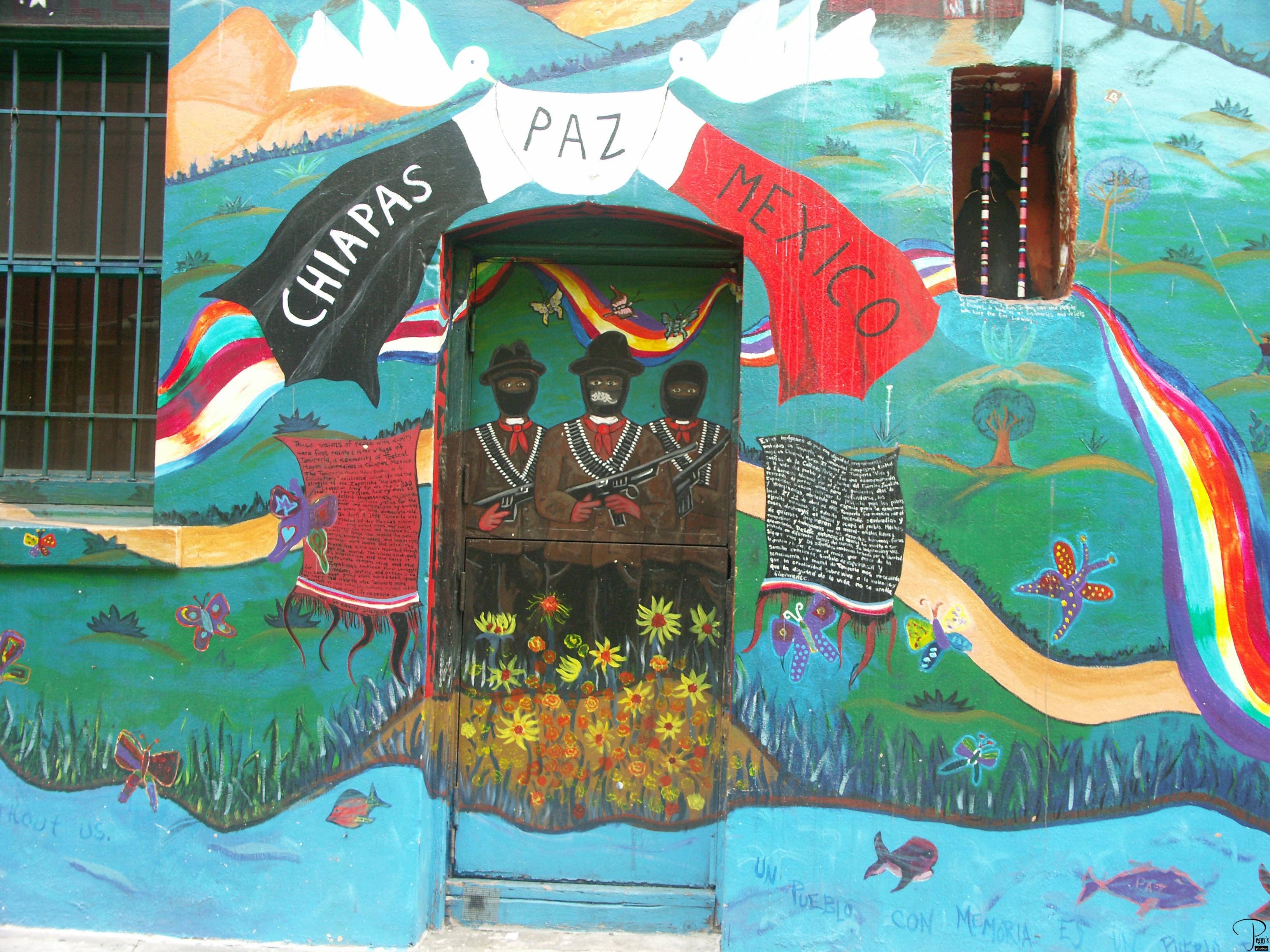
Close–up of the City of Lights mural.

City of Lights Bookstore
City of Lights Bookstore
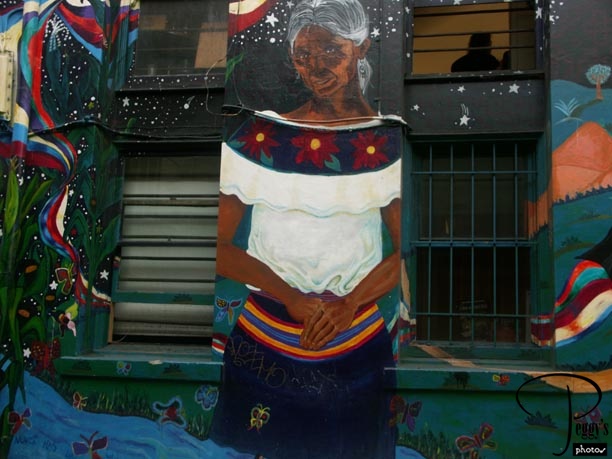
Another close–up of the mural.

City of Lights Bookstore
Tosca
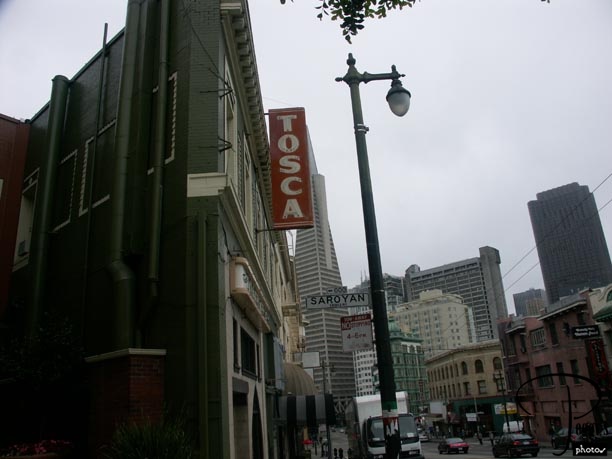
Next building on the walking tour was of Tosca, an old–world bar and cafe that has murals of Tuscany on its walls and a jukebox of Italian opera selections. The bar was closed when I was there, but I don’t think that if it was open that I would have gone into by myself.

Tosca
City View
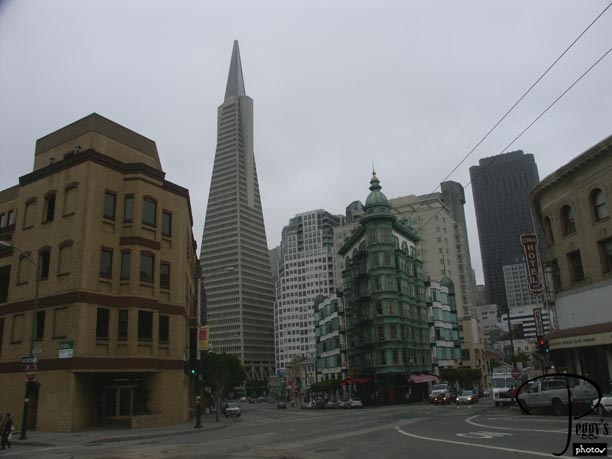
The City of Lights bookstore, Vesuvio, and Tosca are all on Columbus Street. The tour didn’t tell me to look at the sights down farther along Columbus, but I did. The triangular building is the TransAmerica building. I don’t know the name of the interesting building in front of it.

City View
City View
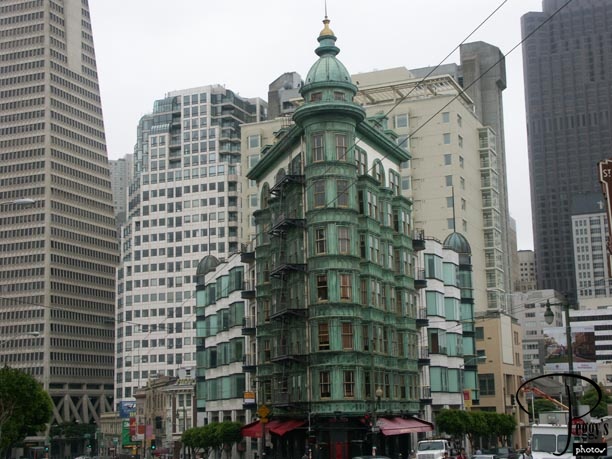
Closer–up of the interesting building.

City View
Alder Alley
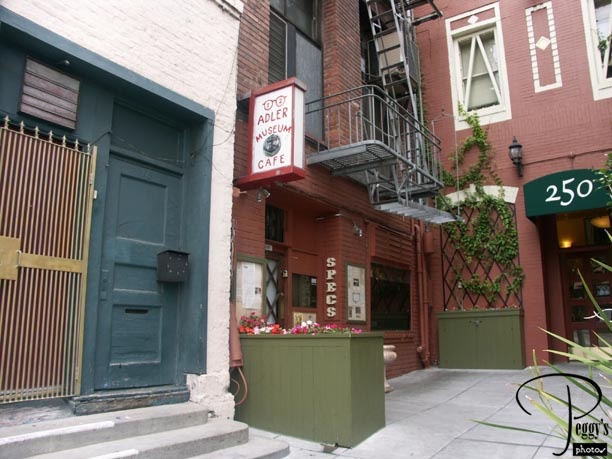
In the opposite direction on Columbus from the TransAmerica building is Alder Alley. Located here is Specs, a bar that was popular with the Beats. Today it is filled with memorabilia of the Beat Generation. It was closed when I was there and, again,I probably wouldn’t have gone into it by myself if it had been open.

Alder Alley
Enrico’s
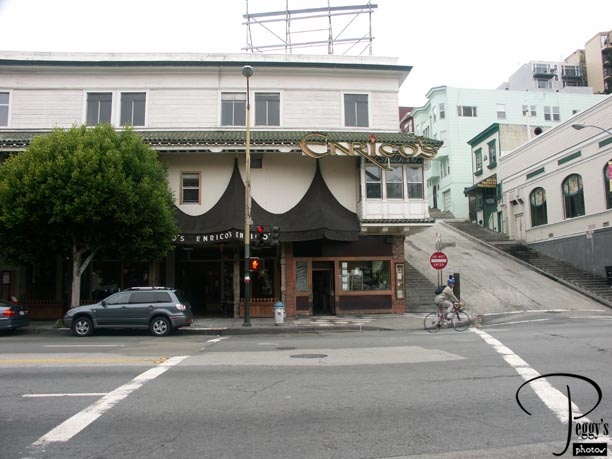
You make a right turn on Broadway from Columbus to find Enrico’s, a sidewalk cafe. Nothing to do with the Beat’s although it is just around the corner from their old hangouts. My book recommends it as a place to watch (at night) the going–ons on this street. This part of Broadway is known as The Strip, because this is where the strip joints are.

Enrico’s
Viansa Winery
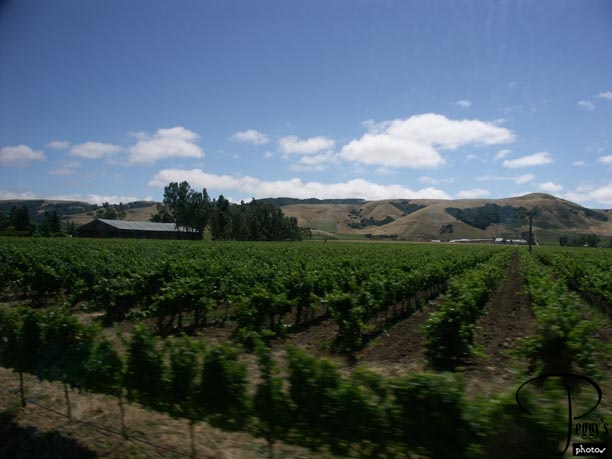
View of the vineyard.

Viansa Winery
Peter Macchiarini Steps
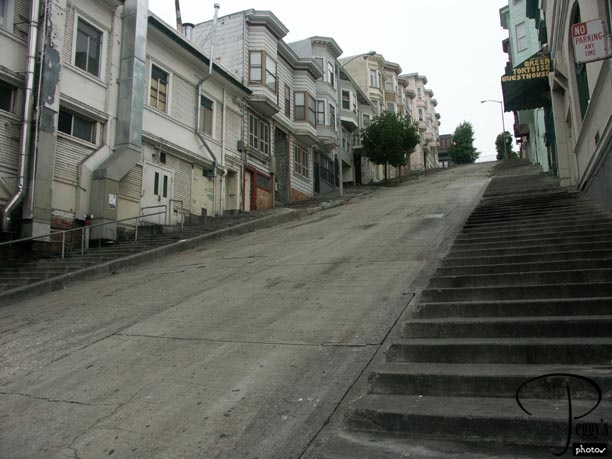
On the right side of the last photo, you will see a very steep street with steps on it. These are known as the Peter Macchiarini Steps. Peter Macchiarini was an artist who turned metal into artwork. He also brought art to the streets of San Francisco.

Peter Macchiarini Steps
Strip Club
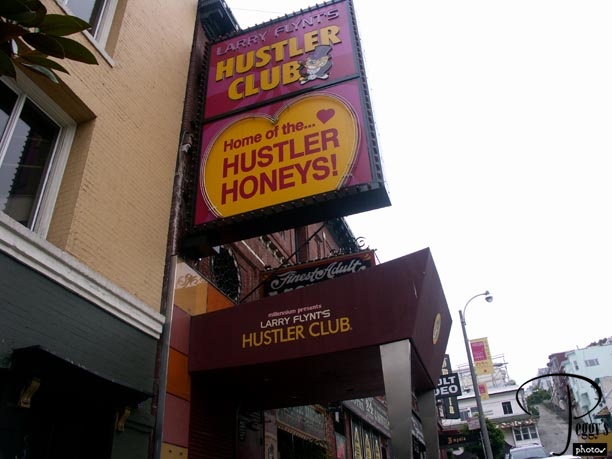
Back to the strip clubs. A big one here is Larry Flynt’s Hustler Club.

Strip Club
Piazza Navona
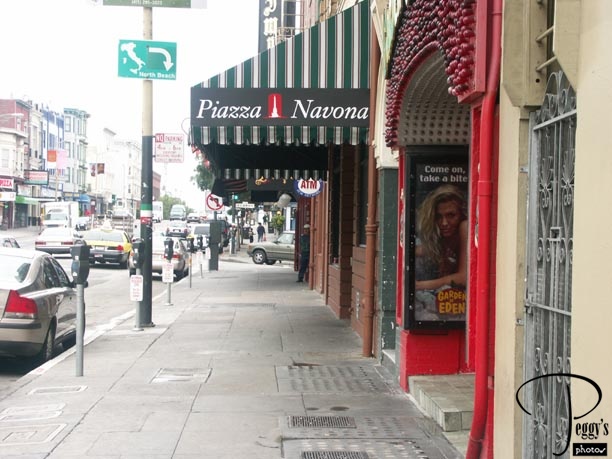
I took a look through the window of Piazza Navona to determine what type of establishment it was––I was intrigued by its name as it is also the name of a famous square in Rome that I had been to on my Italy trip. It appeared to be a bar of some type.

Piazza Navona
Chinese Mural
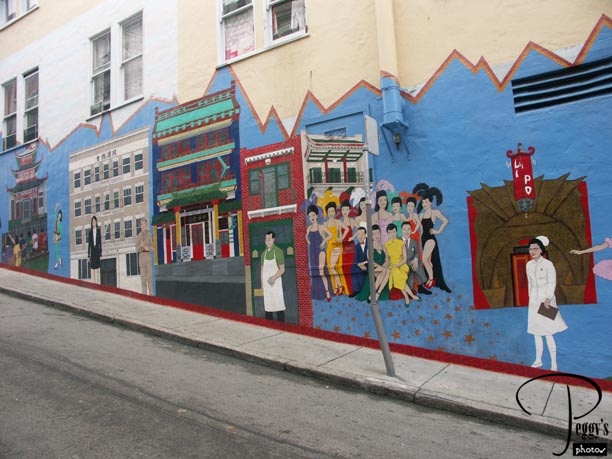
This mural was on a wall of a side of a building on The Strip. It is of Chinese showgirls, nurse, policeman, and everyday people. Why the mural was in this area, I do not know, but it did seem somewhat misplaced.

Chinese Mural
Condor Club
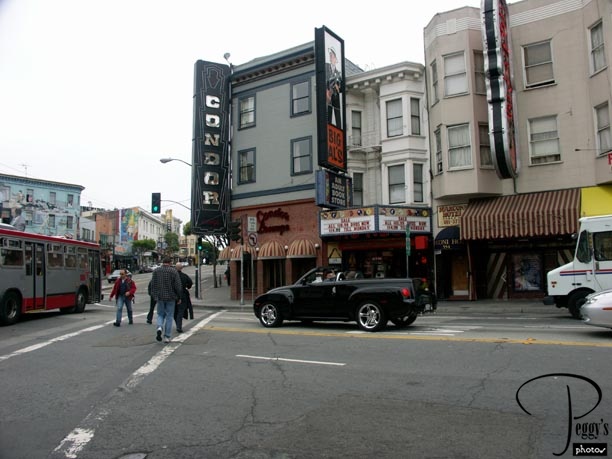
Another building to see on this tour was at Broadway and Grant––The Condor Club, whose claim to fame is that it put on the World’s First Topless Stage Show. This was in 1964.

Condor Club
Strange Intersection
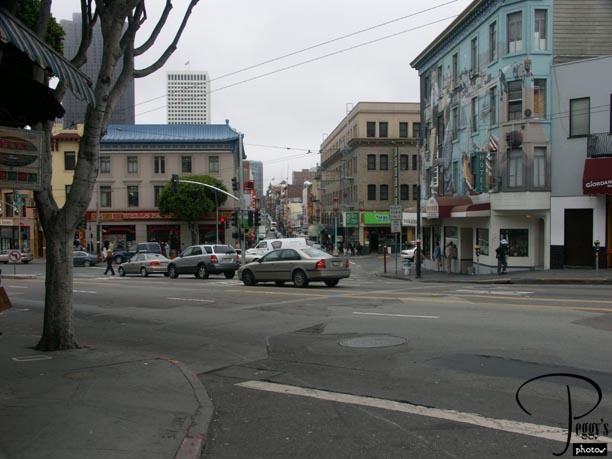
I took this photo from across the street from the Condor Club, so that is on my right. Across the street to my left is the City Lights Bookstore and Tosca, the Italian bar, and to my right are more Italian establishments. But straight ahead is Chinatown. So in just this small space, you have the sex shows, the Beat hangouts, Italian restaurants and bars, and Chinatown. Quite a interesting mixture!

Strange Intersection
Chinatown
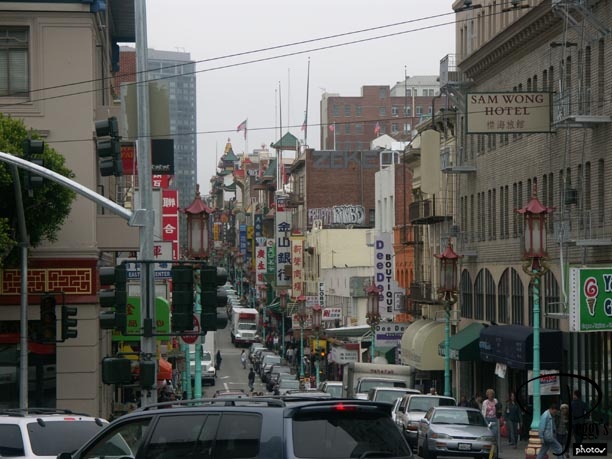
Close–up of Chinatown from my spot across from the Condor Club.

Chinatown
Chinatown/North Beach Building
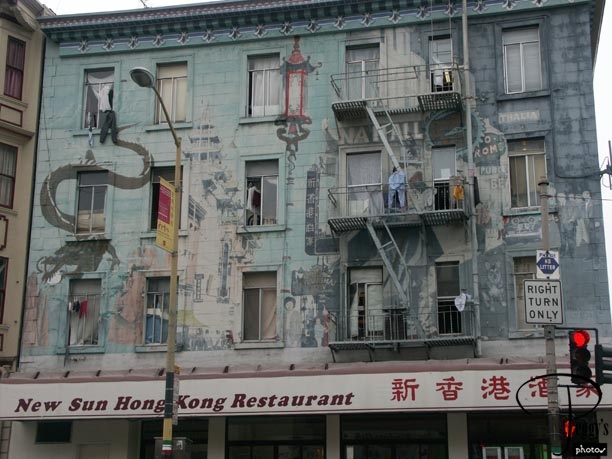
One side of this building faces Chinatown and on it are Asian–type murals (also more laundry hanging here, but I think it might be for effect).

Chinatown/North Beach Building
Chinatown/North Beach Building
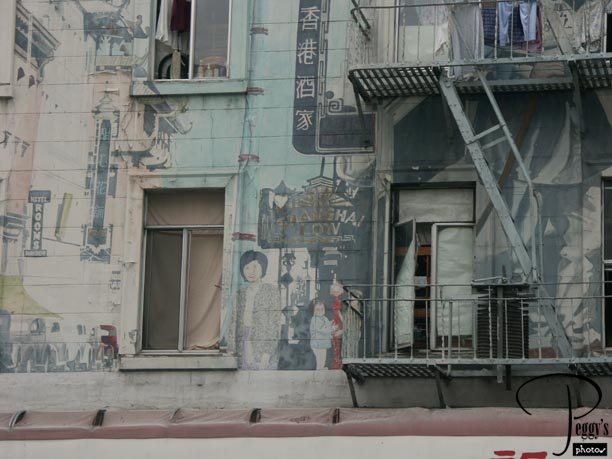
Close–up of the North Beach side of the building.

Chinatown/North Beach Building
Chinatown/North Beach Building
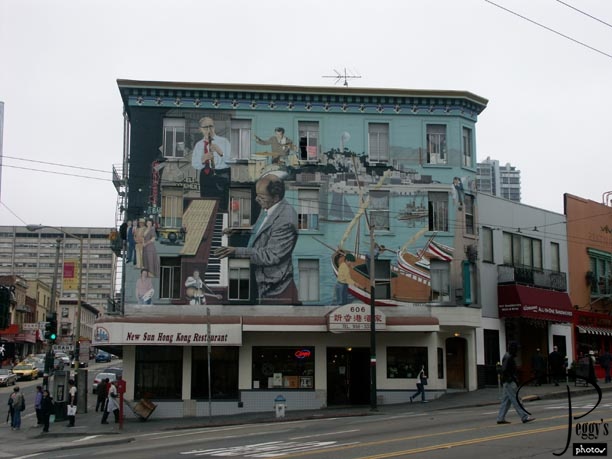
The North Beach side of the building. This is the side that you will see if you take a tour bus through the city.

Chinatown/North Beach Building
Chinatown/North Beach Building
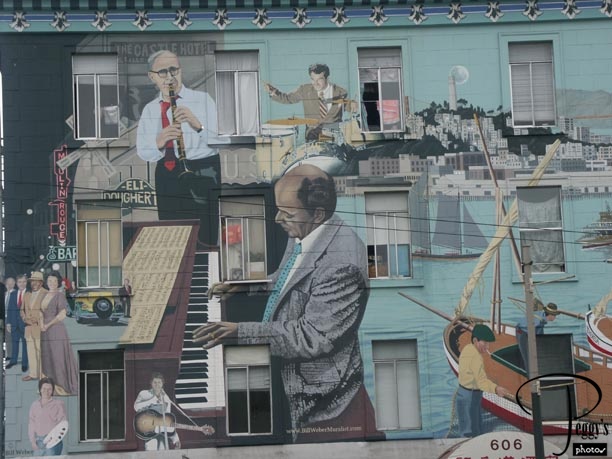
Close–up of the North Beach side of the building.

Chinatown/North Beach Building
The Saloon
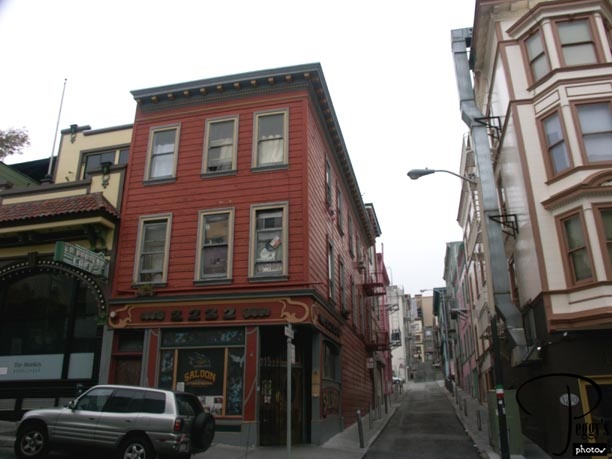
The Saloon, which has an 1861 bar, on upper Grant Avenue, was the next building on the tour. There was also a Lost and Found Saloon on this tour, which was formerly the Coffee Gallery and was a haunt of the Beats, but I didn’t realize that I was to find two saloons and missed the latter one.

The Saloon
Care Trieste
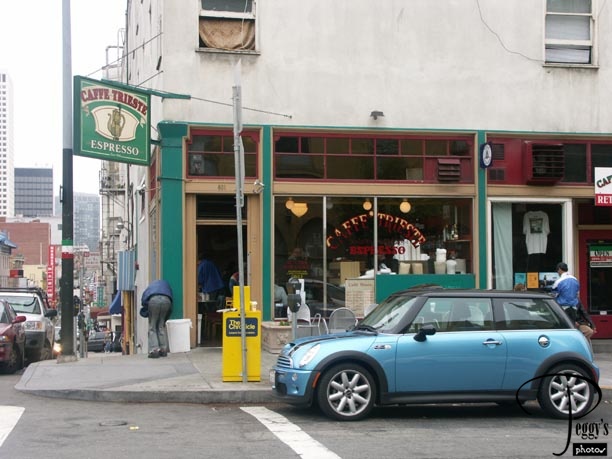
This cafe was across the street from the Saloon. It is the oldest coffee house in San Francisco and has been a writers and artists meeting place since 1956. It has live opera on Saturdays.

Care Trieste
Columbus Cafe
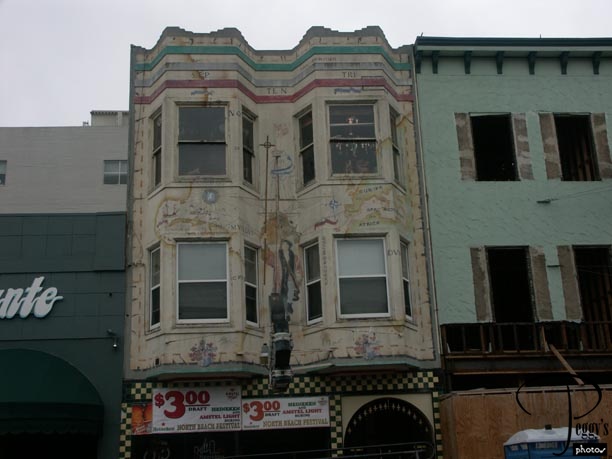
This is the last building on the walking tour, Columbus Cafe on Green Street. It was included because of its interesting murals.

Columbus Cafe
Columbus Cafe

Close–up of the murals.

Columbus Cafe
Laundry
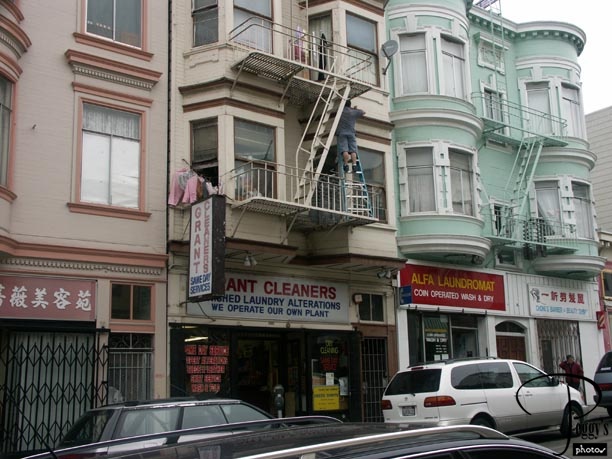
I found the walking tour to be quite good––I would never have found many of the places on my own or realized their significance. It also had me walking in an area that perhaps I would have avoided otherwise, but then by doing so I got to see some other interesting sights, such as this laundry. Is this cleaners actually drying their customers’ laundry from the second–story balcony?

Laundry
North Beach Pizza
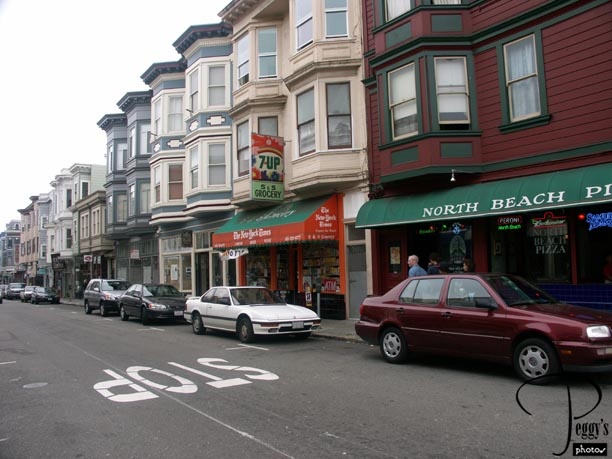
North Beach Pizza is a San Francisco institution. They deliver to hotels, etc. I walked past it on my walk and went in for lunch. I was the only customer as most people do not sit down to eat here but rather order pizza to be delivered or just pick up a pizza here. The pizza I had was tasty with a very thick crust––not nearly as good as the pizza that I had in Italy.

North Beach Pizza
San Francisco Buildings
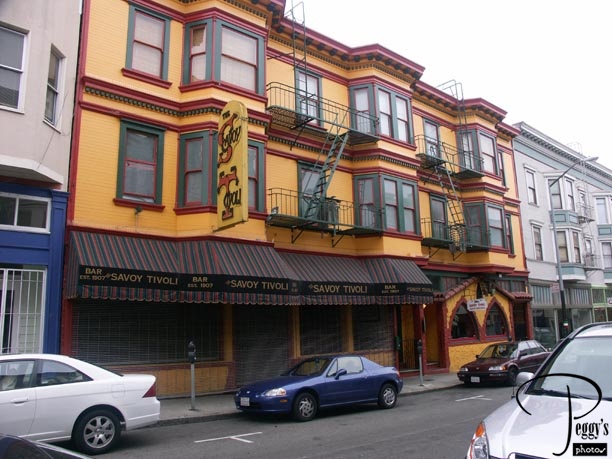
Some buildings in this area.

San Francisco Buildings
National Shrine of St. Francis of Assisi
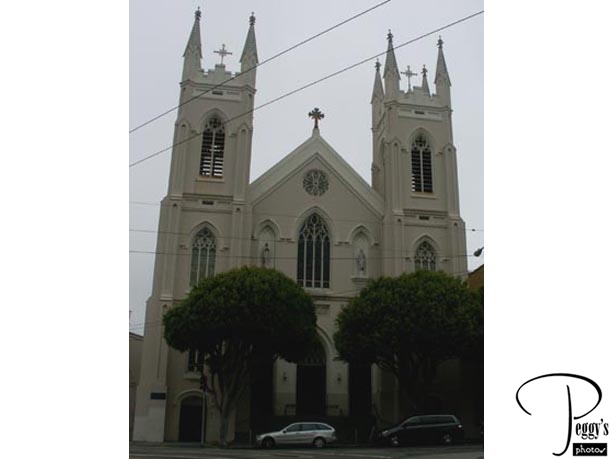
This shrine to St. Francis is located in North Beach in its real Italian part. But it is not a parish church, but rather serves the visitors to San Francisco. It is fitting that this shrine is in San Francisco, as the city is named after St. Francis.

National Shrine of St. Francis of Assisi
National Shrine of St. Francis of Assisi
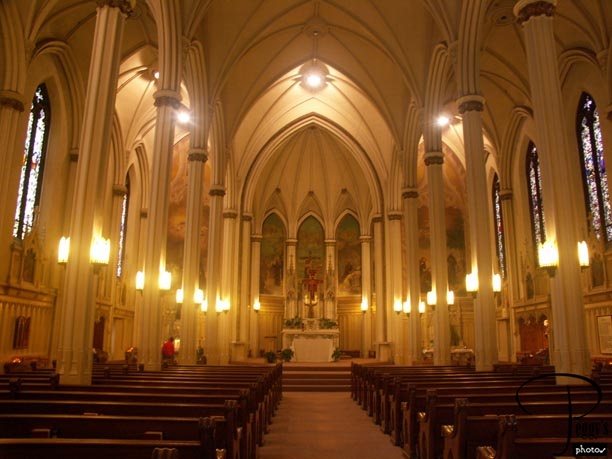
I do not know when this shrine was first erected, but after the San Francisco earthquake of 1906, the shrine was gutted by the fire that followed the earthquake. The church lost precious paintings and stained glass. The shrine was rebuilt and dedicated in 1918. Inside the church.

National Shrine of St. Francis of Assisi
National Shrine of St. Francis of Assisi
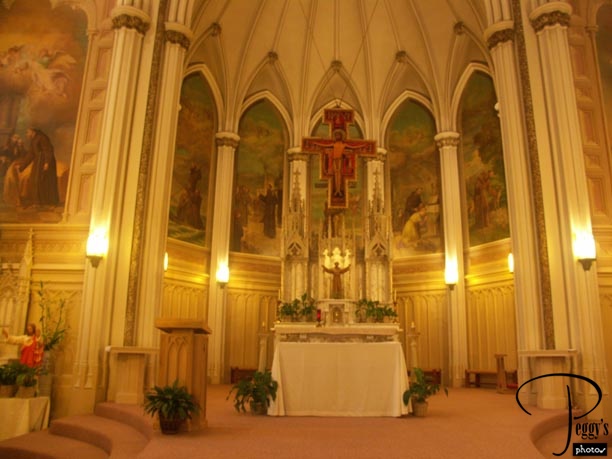
Close–up of the altar.

National Shrine of St. Francis of Assisi
National Shrine of St. Francis of Assisi
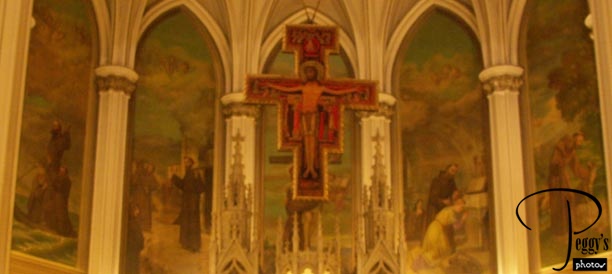
Close–up of the paintings.

National Shrine of St. Francis of Assisi
Italian Grocery
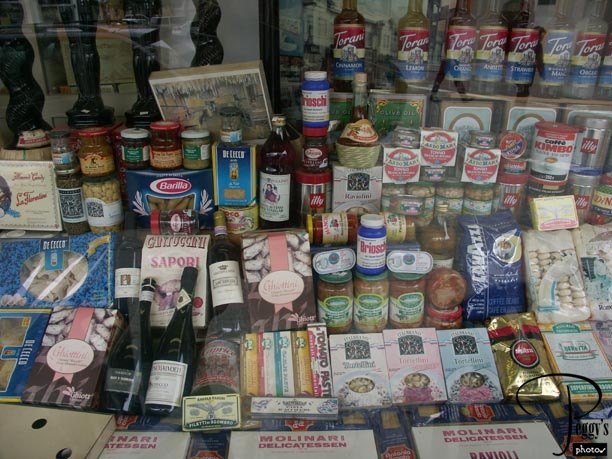
Window of Molinari’s Italian grocery store, across from the Shrine of St. Francis of Assisi.

Italian Grocery
Washington Square
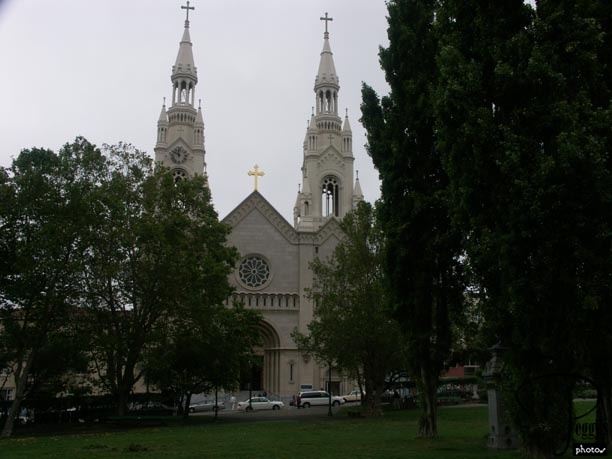
I next walked to Washington Square, which is still in North Beach. The square was laid out as the town square for Little Italy, but there is not a great Italian presence here now. This is a photo of Saints Peter and Paul Church which borders the square. It is still known as the Italian Cathedral, but today masses are said in Chinese as well as Italian and English.

Washington Square
Saints Peter and Paul Church
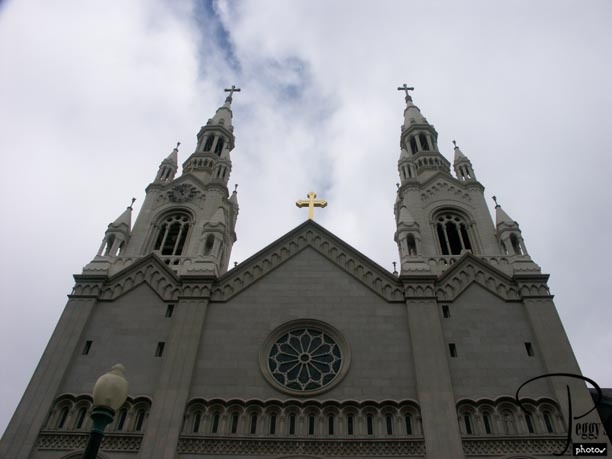
Close–up of the steeples.

Saints Peter and Paul Church
Saints Peter and Paul Church
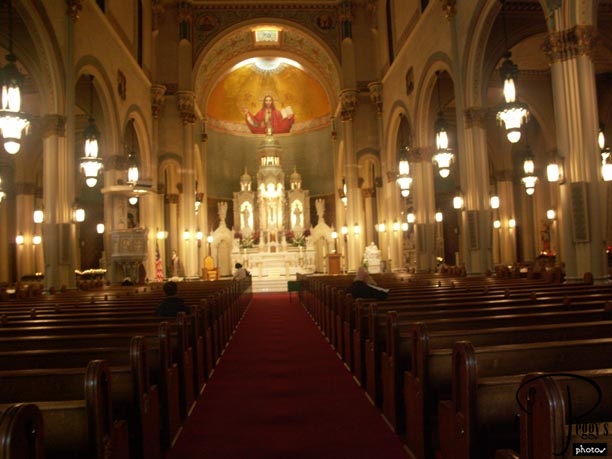
Inside the church.

Saints Peter and Paul Church
Saints Peter and Paul Church
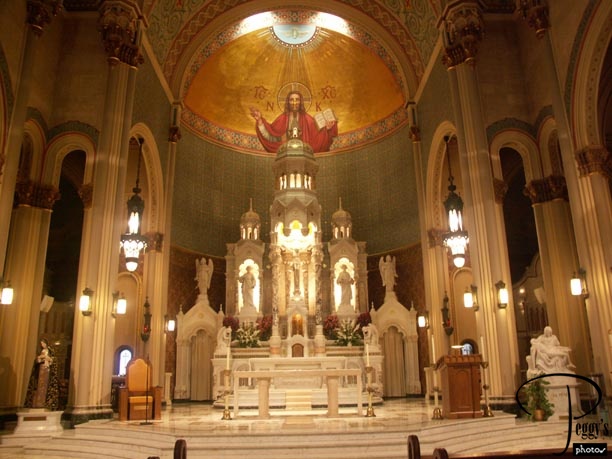
Close–up of the altar. Take note of the statue on the right of the altar.

Saints Peter and Paul Church
Saints Peter and Paul Church
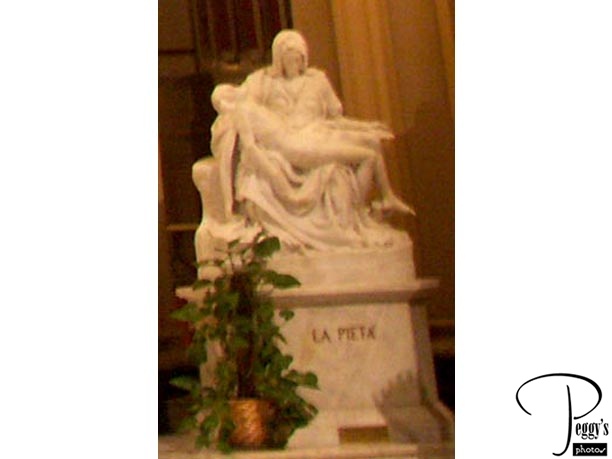
Close–up of the staute: La Pieta, a copy of the original which is in St. Peter’s Basilica in Rome.

Saints Peter and Paul Church
Washington Square
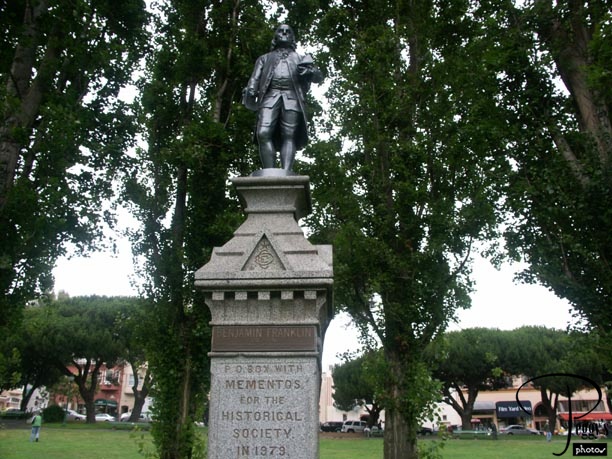
Time capsule in Washington Square buried in 1979 under the statue of Ben Franklin. The time capsule is to be opened in 2079. It is believed to contain Levi jeans, a bottle of wine, and a poem by Beat poet Lawrence Ferlinghetti.

Washington Square
Washington Square
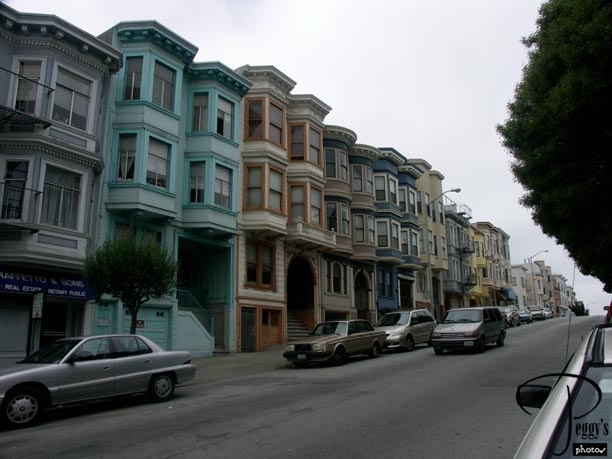
Some interesting houses near Washington Square.

Washington Square
To Telegraph Hill
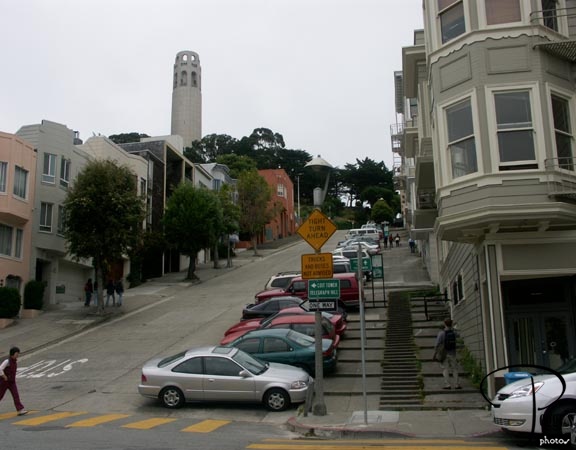
The top of Telegraph Hill is the highest point in San Francisco. Before my trip here, a friend mentioned the parrots of Telegraph Hill and I decided to try to find them. I was planning on taking a bus up the hill but couldn’t find the stop for it. So up I went on foot––this is the very steep street that I walked up. It was hard work. You can see Coit Tower in the photo, which is on top of the hill.

To Telegraph Hill
To Telegraph Hill
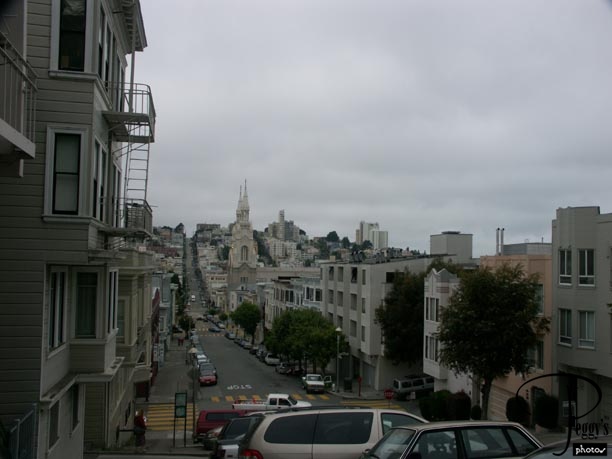
I took this photo from near the top of the street. You can see the steeples of Saint Peter and Paul Church in it.

To Telegraph Hill
To Telegraph Hill
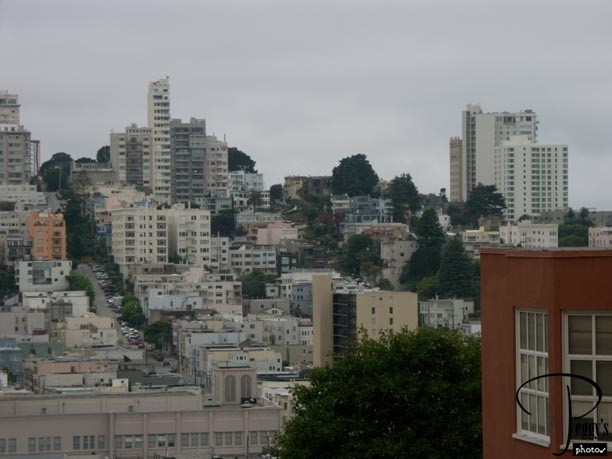
I met a letter carrier on his rounds near the top of the street. When he saw my camera, he told me in what direction to shoot a photo of Lombard Street, the crookiest street in the world. If you look to the right of the tall buildings in the middle of the photo, you may make out Lombard Street.

To Telegraph Hill
To Telegraph Hill
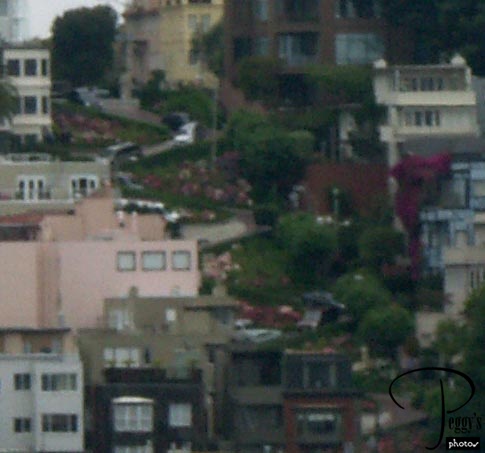
Enlargement of the photo showing Lombard Street.

To Telegraph Hill
Telegraph Hill
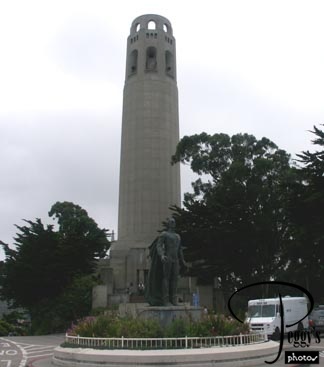
There were quite a number of more steps to climb even after making it to the top of that street. But I made it. Here is Coit Tower on top of Telegraph Hill. I didn’t go up the tower (there is an elevator) as I did it once before. There are great views from to top of it. The statue in the photo is of Christopher Columbus.

Telegraph Hill
Telegraph Hill
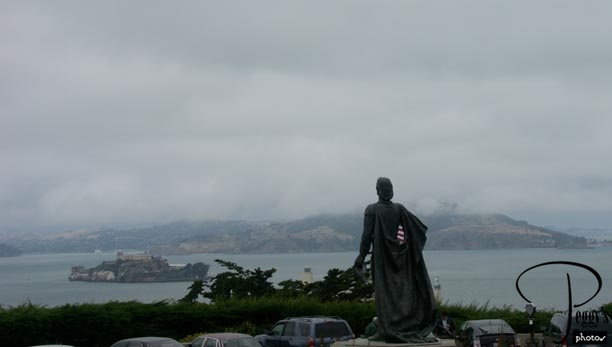
Christopher Columbus overlooking Alcatraz Island.

Telegraph Hill
Going Down the Hill
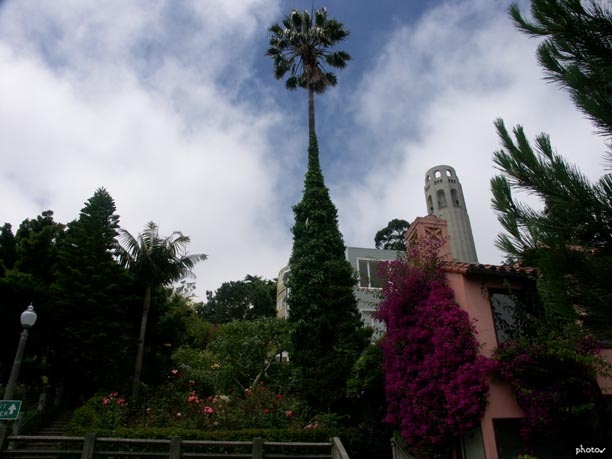
I heard some parrots flying nearby but didn’t see them. I asked a man at a food truck if he knew where the parrots were roosting. He pointed in the direction of the Filbert Steps and told me to go down them, which I did. This is a beautiful walk down the steps, but I pity anyone who decides to climb up them. There must have been way over 300 steps. View of Coit Tower from the steps––the sun is starting to come out.

Going Down the Hill
Going Down the Hill
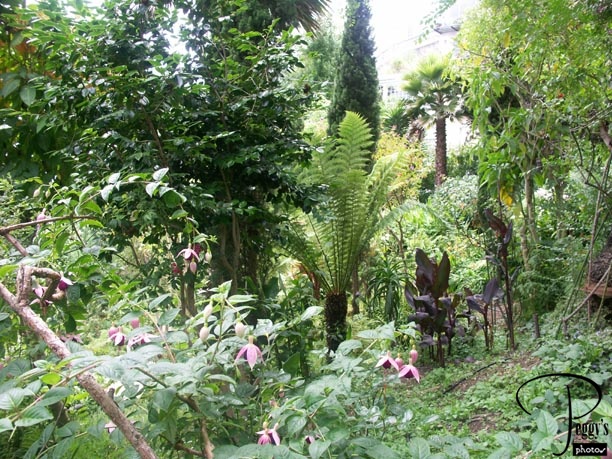
Foliage along the steps.

Going Down the Hill
Going Down the Hill
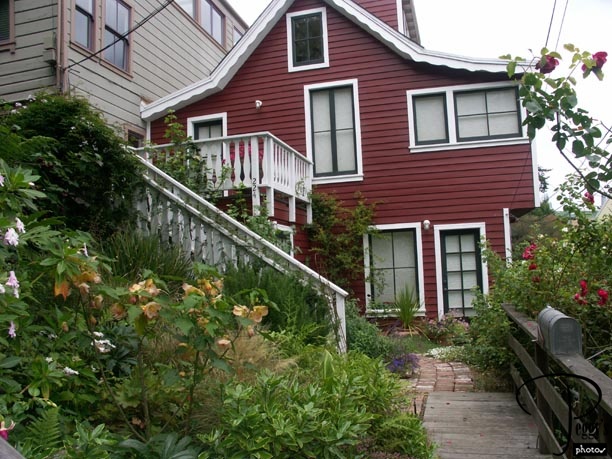
One of the houses along the steps.

Going Down the Hill
Going Down the Hill

I really didn’t know where I was going to end up. This was an unplanned–out excursion, but I did end up at Levi Square and I knew that I was close to the bay. But on my climb down, I did see a couple of parrots fly by and recognized that they were very similar to the wild parrots that roost in the trees and on the telephone wires right in my home neighborhood. The Telegraph Hill parrots, however, are famous because of a documentary that was made about them. Our neighborhood parrots haven’t hit the big time yet.

Going Down the Hill
The F Car
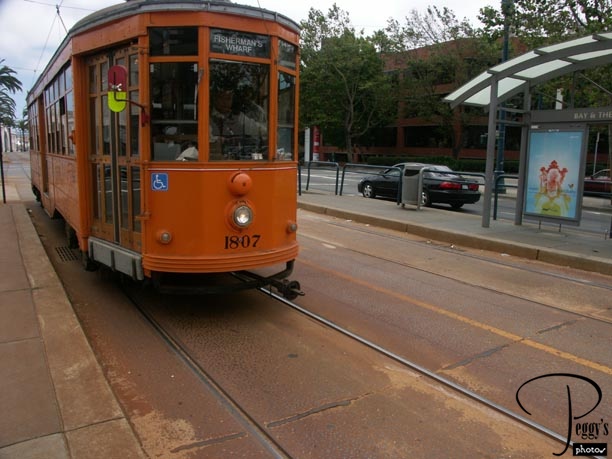
I wanted to go back to Fisherman’s Wharf today as I had seen a travel clothing store when we were at the wharf at night, but the store was closed then. I figured out where I ended up and that I could take the F Car, which travels along the Bay, to the Wharf. San Francisco buys old trolley cars from other cities––this one was from Milan, Italy, and still had some Italian advertisements in it. It reminded me of my recent trip to Italy. I went to the travel clothing store but didn’t see anything that I wanted to buy. So after a coffee break, I got on the F car going in the direction I came from (this one was from Brooklyn). I took the F car to Market Street, got on the California line cable car, then transferred to the Powell/Mason line cable car, and then walked back to the hotel. I was BEAT!
